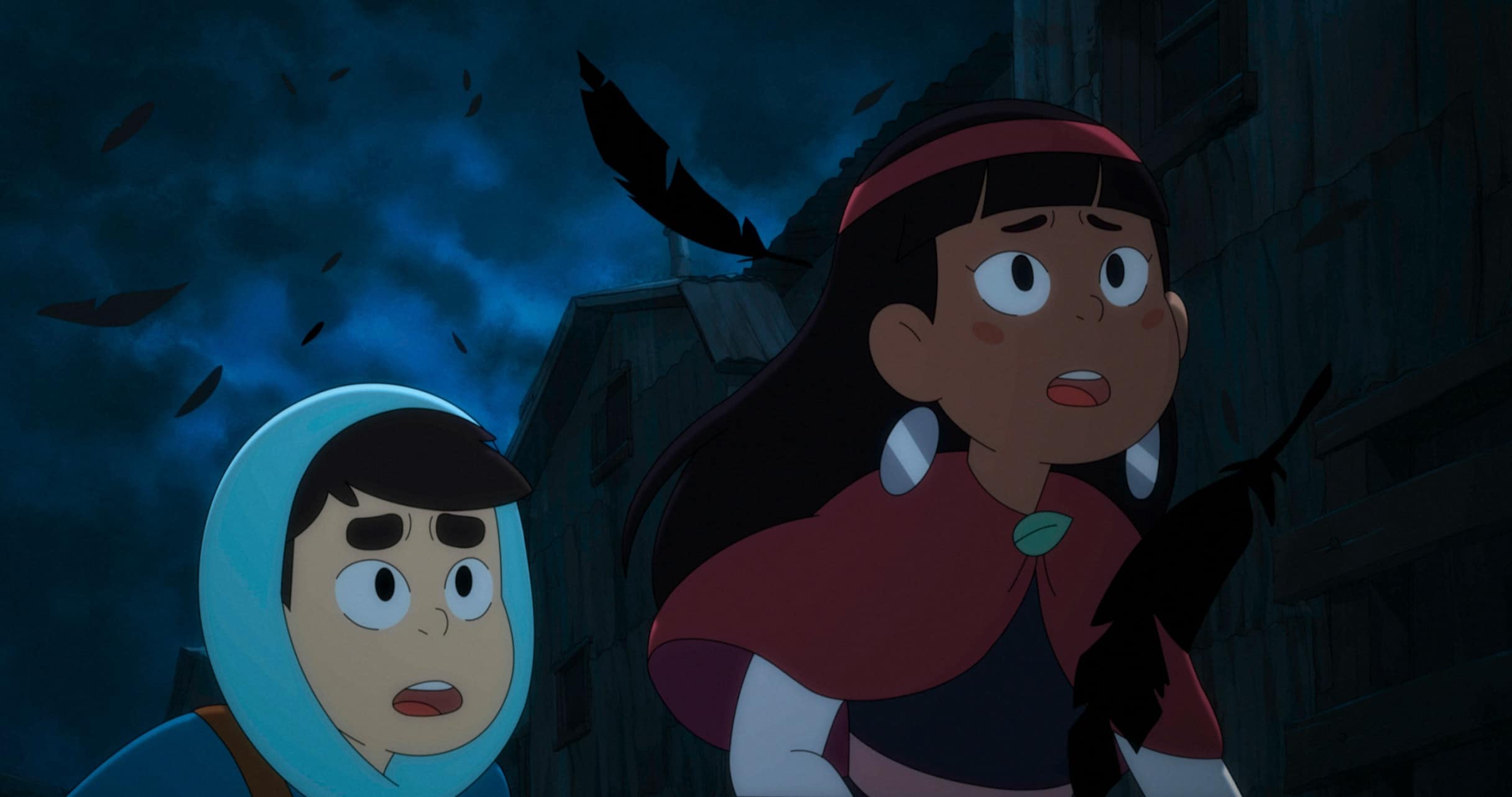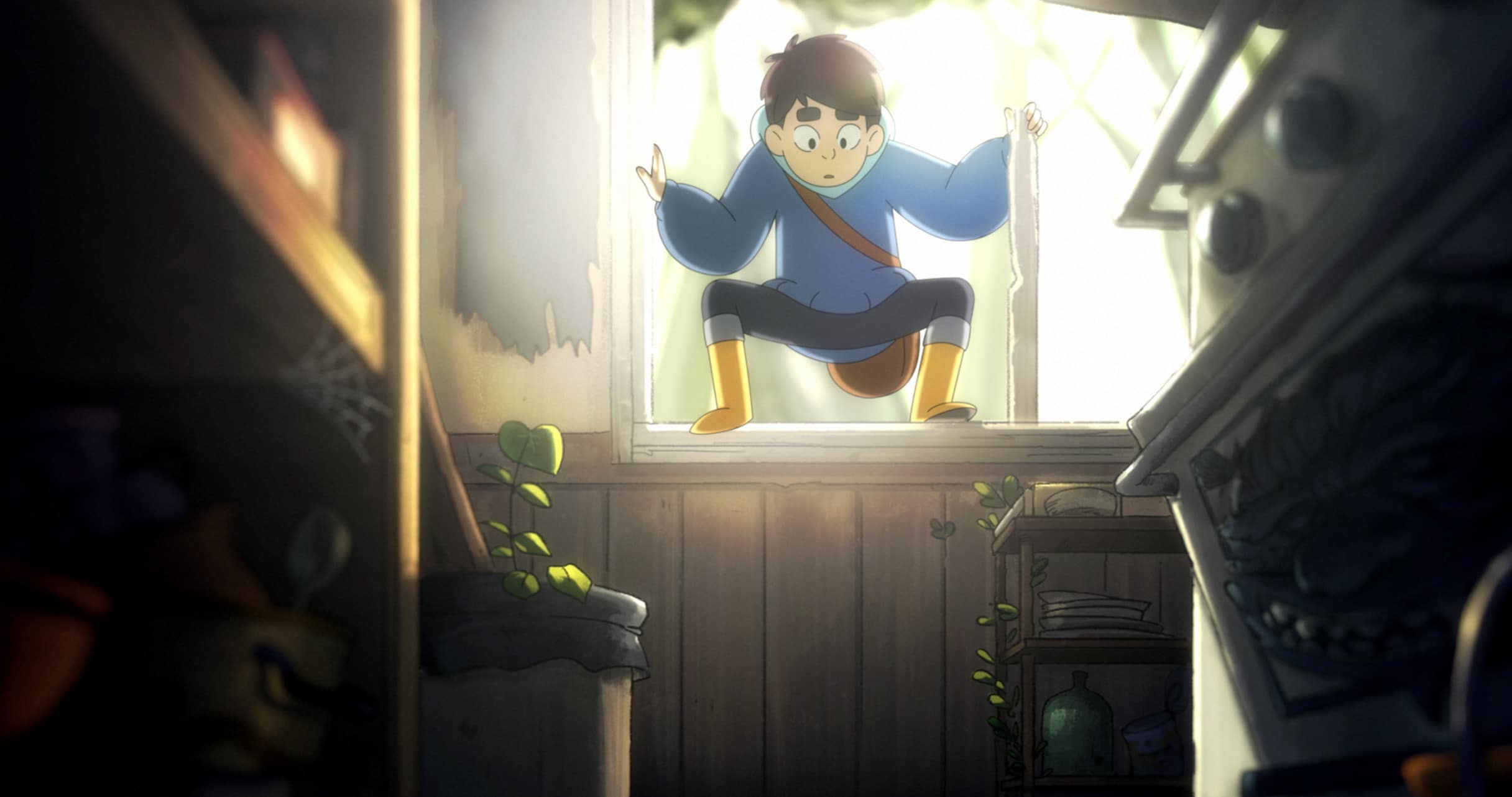Indigenous folklore comes to vibrant life in German Acuña’s directorial debut Nahuel y el libro mágico (Nahuel and the Magic Book). The 2D animated feature is based on Mapuche mythology and set in the Chiloé Archipelago of southern Chile. Co-produced by Chilean companies Carburadores and Punkrobot (Oscar-winner Bear Story), and Brazilian outfit Levante Films, the action-packed, otherworldly adventure centers on a boy who’s afraid of the sea, a major plight given that he lives on an island and his father is a fisherman. That changes when he comes across an ancient book that empowers him. But, as it’s to be expected, he is not the only one that wants the powerful relic. Chased by a malevolent kalku (sorcerer), the young hero sets out on a quest to find bravery within himself without the help of magical spells.
“Chiloé is known as a land of sorcerers,” Acuña told Remezcla from Santiago, about the location from which most of the inspiration emanated. “There are official documents by the Chilean government from when the republic was in its early days that detailed cases in which people were accused of practicing witchcraft and sued for having put a curse on a certain family. Witchcraft is still very present in Chiloé’s culture today.”
Every fantastical component that enters the plot throughout Nahuel’s adventure is taken from those beliefs. From the machis, women healers and spiritual leaders, to El Levisterio, the spell book sets the adventure in motion, which is based on a witchcraft tome that Spanish cartographer José de Moraleda y Montero brought with him to Chiloé, and which he lost to a machi in a bet. Huenchur, the mighty indigenous woman in the film, takes her name from a respected machi whose daughter, Huenchula, married the ancient sea creature Millalobo.

Throughout his extraordinary ordeal, Nahuel — whose name also has his origins in the Mapcuhe language and means jaguar — encounters other otherworldly beings taken from Chiloé’s lore such as the as the Chonchón, a birdlike demon with a human head; La Voladoras, young women with the ability to become birds who do the kalkus’ biddings; El Caicai, a gigantic water snake that according to the Huilliche-Mapuche bought the earth snake Trentren and created the Chiloé archipelago during their battle; or the Trauco, a sort of goblin that preys on women, who was reinterpreted as a more luminous entity.
Aesthetically, Acuña and his team concentrated their efforts on the stunning and meticulously detailed backgrounds, which elevate the overall production value of the piece. The contemplative landscapes and timeless spaces they crafted have already earned Nahuel artistic comparisons to Japan’s most beloved animation house.
“It might call to mind Studio Ghibli not because we can match their animation, but because the environments we are portraying are similar to rural Japan. Japan is also an archipelago with lots of greenery. Nature is a very marked aspect of Ghibli’s work, and you can see that in Nahuel too. Both places share characteristics: forests, wooden houses, and even a bus stop in the middle of a deserted road,” added Acuña.
Being a Latin American production with limited resources, some of their creative decisions stemmed from technical and economic concerns. Instead of pursuing the Western, 2D animation technique seen in Disney films, which has one drawing for each of the 24 frames in one second to create that fluidity of movement, they understood their best bet was working with the limited animation style common in Japan, where there are less drawings within those 24 frames for a more budget-efficient outcome.

Five years in production is not unheard of for independent animation projects, but for Acuña the painstaking nature of the medium presented a challenge when convincing institutions to provide financing — most were used to supporting live-action movies with a much faster turnaround. Now that it’s finally completed, the reward lies in being able to share a culturally specific narrative that celebrates his country’s oft-dismissed heritage with the world at large.
“In Latin America we are used to consuming content—movies and comic books—with ninjas, samurais, cowboys and medieval knights, but very little with our own mythologies, which are vastly rich. Most of our cultural heritage hasn’t really reached pop culture through products like an animated feature or a video game,” said the director.
For Acuña, this family oriented story is the ideal vehicle to bring Mapuche legends into the mainstream via an eye-catching and exciting experience. “We wanted to create a children’s film that would rescue all these indigenous elements without being a historical project. Our goal wasn’t to educate in a traditional way, but to help kids start engaging with these subjects through entertainment.”
Nahuel and the Magic Book premiered earlier this month at the Annecy International Animated Film Festival







